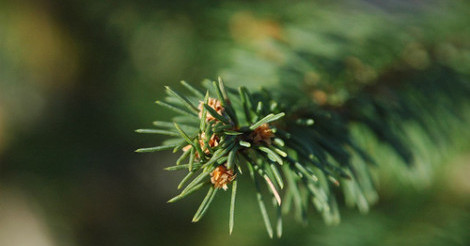
 )
)We talk a lot about science here; how about a chance to do some science? If you have a real Christmas tree in your house, keep track of how much water you are putting into the stand. Then set out an equivalent volume of water in a bowl or cup or whatever. Making some allowance for initial replenishment of dehydration, all of the water you are putting into the tree stand is evaporating into the air. If it weren’t, the tree would be getting bigger. The water in the bowl is evaporating also, but most likely you’ll observe that the tree stand is losing water faster than the bowl. Trees are more efficient evaporators. In a sense, a tree is designed to optimize the flow of water from the ground into the atmosphere (among other things). Which is handy, since the tree needs water to flow back down from the atmosphere in the form of rain.
I’ve been thinking a lot about flow after reading Adrian Bejan‘s Design in Nature (and because my Christmas tree this year is very good at evaporating water). Bejan is an engineering professor at Duke, and he has proposed a “constructal law” of nature that he thinks explains the form and function of a variety of natural systems, including many features of biological systems. “For a finite-size system to persist in time (to live), it must evolve in such a way that it provides easier access to the imposed currents that flow through it.” The idea and the book are worth consideration; they provide a helpful perspective for looking at the world even if Bejan’s law doesn’t turn out to be as fundamental as he believes. He talks about the flow of water through rivers and plants, the flow of goods through an economy, and also more abstract concepts like animal movement as a flow of mass over the surface of the Earth.
Since I’m watering my tree a lot this year, I have time to think about other kinds of flow. At Christmas, God’s love flowed into the world in a new way, in the form of a person. How are people designed to optimize the flow of love? Clearly we have the capacity to love, and God’s love has been poured into us. Can we arrange our lives to provide easier access to the current of love that flows through them? What about the body of Christ that is the church? How can it be designed to optimize the flow of love? Our Christmas trees can teach us one lesson. Trees are good at evaporation because of their surface area; all of the needles (or leaves) provide a lot of contact area between the tree and the air to facilitate flow. So we can consider how our own lives and how our churches can be arranged to increase contact with those that need love.
Andy has worn many hats in his life. He knows this is a dreadfully clichéd notion, but since it is also literally true he uses it anyway. Among his current metaphorical hats: husband of one wife, father of two teenagers, reader of science fiction and science fact, enthusiast of contemporary symphonic music, and chief science officer. Previous metaphorical hats include: comp bio postdoc, molecular biology grad student, InterVarsity chapter president (that one came with a literal hat), music store clerk, house painter, and mosquito trapper. Among his more unique literal hats: British bobby, captain’s hats (of varying levels of authenticity) of several specific vessels, a deerstalker from 221B Baker St, and a railroad engineer’s cap. His monthly Science in Review is drawn from his weekly Science Corner posts — Wednesdays, 8am (Eastern) on the Emerging Scholars Network Blog. His book Faith across the Multiverse is available from Hendrickson.

Great post Andy. Merry Christmas and Peace of Christ to you.